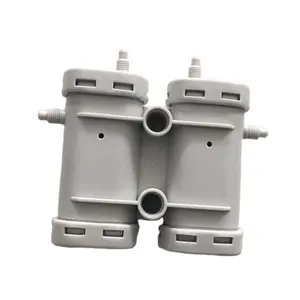
Volkman valve for volkman spare parts valve for tfo twisting machine parts



















A needle valve is a type of valve with a small port and a threaded, needle-shaped plunger. It allows for precise regulation of flow, although it is generally only capable of relatively low flow rates. These valves are commonly used in flow-metering applications, especially when a constant, calibrated, low flow rate must be maintained for some time, such as the idle fuel flow in a carburetor.
Not all needle valves are created equal, with variations designed to meet specific needs. From simple manual valves for precise control of gas flow in a laboratory setting to sophisticated automated valves integral to complex industrial processes, the applications are as varied as the designs. They are essential in industries ranging from pharmaceuticals to manufacturing, where precise flow control is crucial.
The design of a needle valve is characterized by its tapered point at the end of the valve stem. This is the essence of its design, allowing for the precise adjustment of flow. Materials used in valve construction are chosen based on compatibility with the fluids being handled, pressure requirements, and temperature conditions. Common materials include brass, stainless steel, and bronze, each offering different advantages in terms of durability and suitability for various tasks.
The primary advantage of a needle valve is its ability to precisely control flow rates. Due to their fine-threaded stem, the valves can be adjusted to allow for very precise flow control. This makes them ideal for situations where precise adjustments to flow or pressure are necessary. Additionally, their simple design makes them easy to maintain and repair, which is beneficial in systems where uptime is critical.
When selecting a needle valve, it is important to consider factors such as the material compatibility with the fluid, pressure ratings, and the required precision of flow control. The valve's size and end connections must also be suitable for the existing piping. It is essential to ensure that the valve selected meets the specific needs of the application to ensure efficiency and longevity.
Integrating a needle valve into a piping system requires understanding the system's design and the role the valve will play. Whether it is being used in a simple water filtration system or as part of a complex chemical processing plant, the correct valve can make a significant difference in the system's performance. Careful consideration of the valve's specifications and the system's requirements is key to a successful integration.